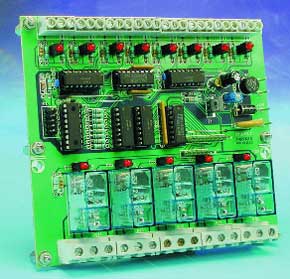Pico PLC
microcontroller or Programmable Logic Controller?

This is a MEMBER ONLY article. You need a subscription to read this article.
- Unlimited access to online Member Only articles
- 3 new editions Elektor Magazine (digital)
- More than 5000 Gerber files
- 20% member discount on e-books (at elektor.com)
- 10% member discount on Products (at elektor.com)
Available from €5.33 per month.
What is Members Only
Elektor is committed to providing high-quality content on electronics, catering to tens of thousands of paying members. As part of this commitment, Elektor has launched Premium, an initiative that offers exclusive online articles to members sometimes even before they appear in the magazine.
Every day, members can access in-depth articles that showcase the best of Elektor's premium content.
This initiative aims to reward members with early access. Once logged in, members can easily enjoy this exclusive content and engage in discussions about featured projects. While Premium adds to the existing resources available, Elektor will continue to provide a wealth of free information.
Join the Elektor community today to take advantage of Premium and other benefits!
Materials
Gerber file
CAM/CAD data for the PCB referred to in this article is available as a Gerber file. Elektor GREEN and GOLD members can exclusively download these files for free as part of their membership. Gerber files allow a PCB to be produced on an appropriate device available locally, or through an online PCB manufacturing service.
Elektor recommends the Elektor PCB Service service from its business partner Eurocircuits or AISLER as the best services for its own prototypes and volume production.
The use of our Gerber files is provided under a modified Creative Commons license. Creative Commons offers authors, scientists, educators and other creatives the freedom to handle their copyright in a more free way without losing their ownership.
Component list
R1-R8 = 1k?8
R9-R16 = 680?
R17,R36 = 4-way 4k?7 SIL array
R18-R25 = 10k?
R26 = 1k?
R27 = 7-way (or 8-way) 10k? SIL array
R28 = 3k?3
R29 = 330?
R30 = varistor 30V, 600mW, diameter 15-17 mm (e.g., BCComponents # 2322 5953006)
R31-R35 = 4k?7
R37 = 10k? (4k?7)*
Capacitors:
C1,C3,C4,C7 = 100nF ceramic
C2 = 22pF
C5 = 47µF 16V radial
C6 = 47µF 35V radial
Semiconductors:
B1 = B80C1500 (80V piv, 1.5A), in round case
D1-D8,D17,D25-D29 = 1N4148
D9-D16,D20-D24 = LED. low current
D19 = 1N5407
IC1 = PIC16F84A-04/P
IC2 = 74LS151
IC3 = ULN2003
IC4 = 78L05AC
IC5-IC8 = LTV847 (Liteon), ILQ621 (Infineon) or PC847 (Sharp)
Miscellaneous:
K1 = 10-way boxheader
K2-K9 = 3-way PCB terminal block, lead pitch 5mm
K10-K14 = 3-way PCB terminal block, lead pitch 7.5mm
K15 = 9-way pinheader
K16 = 6-way pinheader
RE1-RE5 = relay, 16 A/250 VAC (Finder # 40.61, coil 12VDC, 220?; or Omron # G2R-1-E 12VDC; or Schrack # RP310012)
PCB, order code 010059-1
Disk, test program, order code 010059-11 or Free Download



Discussion (0 comments)